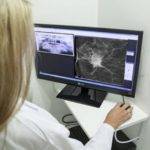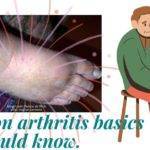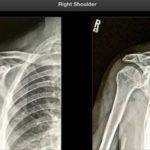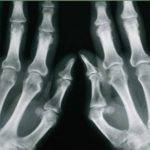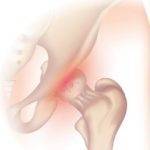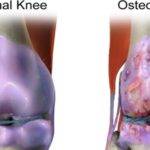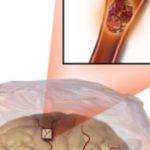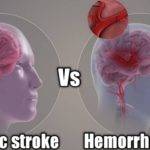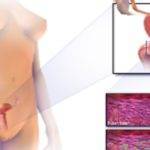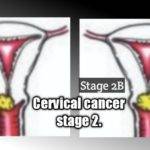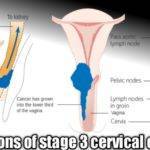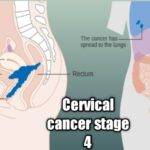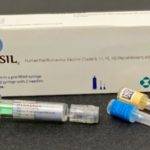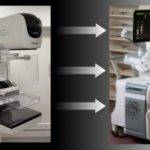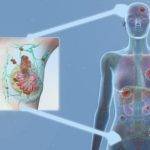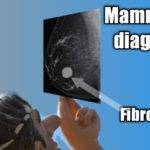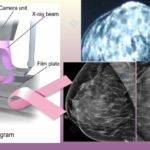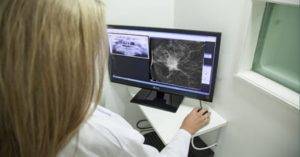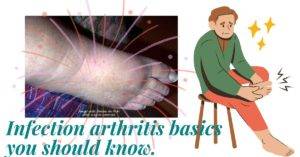
Table of Contents
According to the Journal of the American Cancer Society, metastasis is a process where cancerous cells leave the area they were formed (the breast, in this case) and travel via a circulatory system (blood or lymph) to establish secondary tumor sites in other parts of the body like the brain, bones, and other organs.
It is otherwise called stage 4 cancer. This is quite the opposite of what we call localized build-up of these cells where the cancerous cells are contained within their primary area of formation like stage 1.
Breast cancer is the second most common cancer in women in the United States, after skin cancer and for some reason, the left breast is slightly more likely to develop malignancy than the right.
In this article, we’ll take a look at the metastasis of breast cancer symptoms, first in general and then the symptoms that are more specific to some organs.
The development of metastasis.
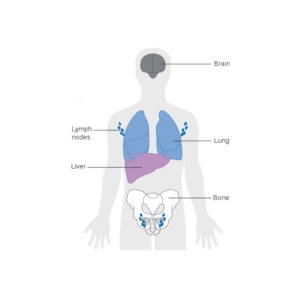
In most cases, metastasis of breast cancer happens after initial cancer treatment. It turns out some cancerous cells may escape the devastation of a previous treatment designed to kill them off while others become dormant and undetectable in the body.
So, while you are getting relieved and recovering from the effects of the treatment you got, these dormant cells, for reasons no one has been able to tell, get reactivated and begin spreading to other parts of the body via the circulatory (blood) and lymphatic systems.
Sadly, this signifies a poor prognosis for subsequent treatments as has been affirmed in the book of Pathobiology.1
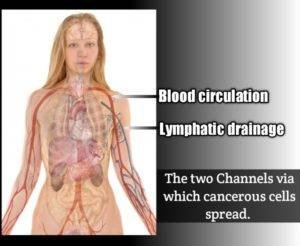
Almost a third of all women whose cancer was discovered early via mammography and got treated, eventually develop metastasis. Mammography remains a great way of detecting these resurgences after a previous treatment which is the reason why those who have had cancer before should take breast screenings seriously.
A physically detectable cancerous tumor may have been growing in your body for 2 to 5 years which makes clinical breast examination somewhat unreliable.
There are occasions where at the time of the first diagnosis, the cancerous cells are found to have already metastasized. We call this De Novo metastatic breast cancer.
The ability of cancerous cells to metastasize(spread) to distant parts of the body has been linked to certain changes in their cellular metabolism (biological reactions) like increased adenosine triphosphate (ATP) production and is described in a research Journal of Cell Biology.2
ATP is like an energy currency within cells.
Symptoms of breast cancer metastasis.
Based on how far cancerous cells have been able to spread in the body, the situation can be described as localized, regional, or distant metastasis. Each of these has an impact on the symptoms the patient has to deal with.
Parts of the body or organs often affected by the metastasis of breast cancer are the lymph nodes, liver, lungs, brain, and bones. I’ll discuss this based on the symptoms associated with the spread of cancerous cells to these specific parts of the body.
Note that no matter the organ(s) affected, it remains a breast cancer metastasis and the symptoms are pinned to breast cancer rather than on the affected organ.
Some people show little or no symptoms at all.
Symptoms due to metastasis to the lymph nodes.

Subcutaneous(under the skin) lumps in areas like the underarm and neck.
Night sweats.
Fever.
Physical fatigue and weight loss.
Itchy skin.
Anorexia(Loss of appetite). It may also be the result of chemotherapy if you’ve started treatment.
Symptoms due to metastasis to the Lungs.
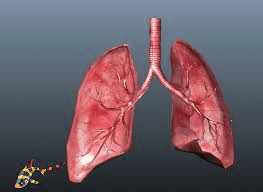
Dry cough. This may come with blood-stained mucus in some cases.
Breathing difficulties and wheezing.
Chest pain and, or pain coming from lung fields.
Symptoms due to metastasis to the Brain.

1. Confusion.
2. Memory problems.
3. Disturbances of vision.
4. General body weakness and Quadriparesis (weakness of all limbs). Most of my patients at this stage usually find it difficult to sit unsupported. However, that improves with continued expert care.
5. Hemiparesis (one-sided weakness of the body)
6. Stroke or Hemiplegia (paralysis of one side of the body). This may be preceded by hemiparesis.
7. Mood swings.
8. Seizures.
9. Dizziness.
10. Incoherence.
11. Headaches.
Symptoms due to metastasis to the bones.
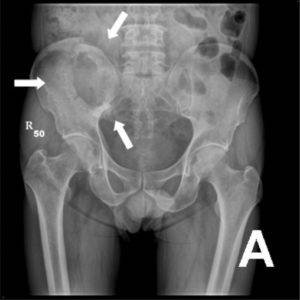
Back, neck, and joint pains.
Risk of fracture. Spinal cord compression from a fractured vertebra will result in the weakness of parts of the body controlled by the compressed nerves.
Numbness.
Constipation.
Dehydration.
Loss of appetite.
Symptoms due to metastasis to the liver.
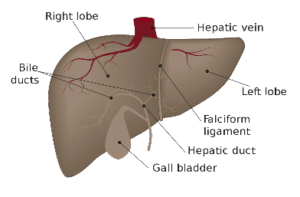
1. Ascites. This is the accumulation of fluid in the peritoneal cavity. The peritoneal cavity is the space in the trunk that houses the liver, intestines, stomach, etc. They are part of a collection of organs called the visceral organs.
2. Pain where the liver is situated at the upper right-hand side of the abdominal area.
3. Jaundice, which is characterized by the yellowing of the white area of the eye.
End-stage symptoms.
At this stage, the breast cancer may have stopped responding to treatment. What the patient feels is a combination of most of the symptoms listed earlier in progression.
Pains,
Dizziness,
Fever,
Anorexia (loss of appetite),
Constipation,
Headaches,
General body weakness and fatigue,
Cough and respiratory distress (difficulty breathing)
It breaks my heart to see my patients at this stage.
Usually, I shift my treatment objectives to palliative care aimed at mitigating these symptoms, thereby reducing the patient’s suffering as much as possible and it usually goes very well and much better than anticipated.
De novo metastasis of breast cancer, mentioned earlier in this article, may call for palliative care on discovery.
How is metastasis of breast cancer diagnosed?
Diagnoses of metastatic breast cancer are made in two different scenarios:
1. Recurrence. This happens months or years after an initial diagnosis is made and treated.
2. De novo. It accounts for about 6% of breast cancers in the United States and refers to cancers that were only discovered after they had already spread.
Diagnoses are made using the following test procedures.
1. Positron Emission Tomography Scan (PET scan). Cancerous cells have a great affinity for sugars. In a PET scan, radioactive sugar gets injected into the blood which gets used up by these cells much higher than healthy cells. More information is contained in the European Journal of Cancer.3
All the parts of the body shown in a subsequent scan where the radioactive sugar is found to be concentrated and metabolized are suspicious for cancer.
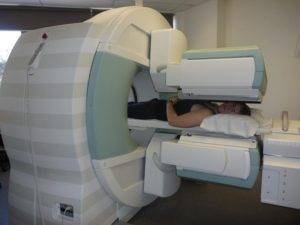
2. Computed Tomography scan (CT scan).
This shows Images of the internal parts of your body from a computer connected to an X-ray machine. Dyes could be injected into the body for clarity. It could be done with a PET scan. More details can be found in the Journal of the American Association of Physicists in Medicine (AAPM).4
3. Ultrasound scan.

This machine utilizes sound waves to hunt for tumors in parts of your body like the abdominal cavity and breasts. It’s often used in addition to 3-D digital breast tomosynthesis.
4. Bone scan. It involves the injection of radioactive substances in the blood that could map out areas of possible breast cancer metastasis in the bone and are detectable in scanners.
5. Biopsies. It involves the removal of tiny tissues that are sent to the lab to check for cancerous growths. Tissues could be removed with a hollow needle or via surgery.
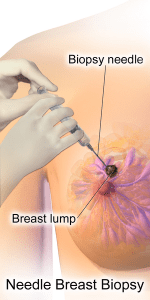
6. Sentinel Lymph node biopsy. This is a form of biopsy where the sentinel lymph nodes are the target for extraction and testing. The Sentinel lymph node is the first lymph node to likely harbor metastasizing cells.

7. MRI.

It’s great for the detection of bone and brain metastasis.
8. Blood tests. This can be used for the early detection of breast cancer as it identifies the body’s immune responses to certain substances from tumor cells. The limitation it may have is not being able to tell if the cancer is metastasizing.
9. Bronchoscopy. This is used to investigate metastasis in the lungs. The device, bronchoscope, could also serve as a channel for biopsy.

10. Tap. It involves the extraction of body fluid from a suspected area to screen for cancer cells e.g. pleural tap.
Treatment.
Stage 4 metastases of breast cancer may be incurable but still have to be treated to:
- Ease your symptoms.
- Shrink the tumors and, or reduce their rate of spread.
- Endeavor you get a good quality of life despite your health condition.
The treatment measures include.
1. Chemotherapy: This is given intravenously for weeks and may have side effects that are very similar to the symptoms of metastases of breast cancer. There has been a review of it published in Oncology reports.5

2. Hormonal therapy. Many years ago it was used as a palliative measure but major advances have led to its use in the treatment of certain types of breast cancer as contained in a Cancer Treatment Review Journal.6
3. Targeted therapy. These are drugs used to target certain proteins and genes that encourage breast cancer and may be combined with Chemo or Hormonal therapies. It is discussed in the American Journal of Pathology.7
4. Immunotherapy. It’s an approach aimed at getting your immune system to target and destroy cancerous cells and is discussed in the Journal of the American Association for Cancer Research (AACR).8
5. Radiation therapy. This involves the use of high-energy radiation to destroy cancerous cells and is described in the International Journal of Radiation Oncology.9 It could be recommended after surgical excision of tumors or used to destroy tumors that can’t be removed.
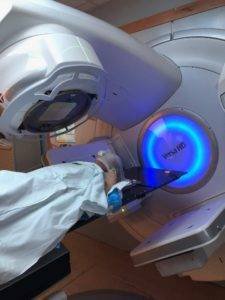
The treatment for metastatic breast cancer is a continuous one but may be stopped for a while during periods of remission, or at your behest as a patient when the side effects get unbearable. Side effects may give rise to a review of treatment measures.
Kindly sign up for our newsletter to keep in touch:
Life expectancy and causes of death.
Statistics from the National Library of Medicine (NLM) show that the spread of tumor cells to other parts of the body, otherwise called metastasis is the leading cause of death in patients with breast cancer.10 It accounts for about 42% of deaths.
Patients with metastatic breast cancer could live up to 5 years post-prognosis. The median survival range is 2-4 years.
Research by the American Association for Cancer Research has shown Caucasians have longer survival than non-Caucasians.11 The extent of weight loss before treatment adversely affects survival whereas patients with metastasis to the bones thrive longer than those with metastases to other organs.
Surprisingly, the stage at which diagnosis was made isn’t a significant determinant of prognosis in breast cancer Click To Tweet. Not that it’s not a determining factor but its influence wasn’t seen to be significant.
The response to treatment directly correlates with survival but patients with other health problems or who had had prior extensive radiotherapy were found to have shorter survival.
Conclusion.
There may be yet no cure for Metastases of breast cancer but there are considerable varieties of treatments designed to help you carry on with life for as long as possible while mitigating the metastasis of breast cancer symptoms.
If one treatment doesn’t seem to be working, other options can always be pursued either as a single measure or in combination with other treatment modalities.
I hope this has been helpful in some way. I’ve tried to keep things as simple as possible, however, feel free to reach out for clarifications on anything that still seems ambiguous.
You may also be interested in knowing the exact age you should start or end your mammogram screening.
References.
- Magdalena Książkiewicz; Aleksandra Markiewicz; Anna J. Żaczek. (2012). Epithelial-Mesenchymal Transition: A Hallmark in Metastasis Formation Linking Circulating Tumor Cells and Cancer Stem Cells. Pathobiology. Pathobiology (2012) 79 (4): 195–208. https://doi.org/10.1159/000337106 ↩︎
- Elia, I., Doglioni, G., & Fendt, S. (2018). Metabolic Hallmarks of Metastasis Formation. Trends in Cell Biology, 28(8), 673-684. https://doi.org/10.1016/j.tcb.2018.04.002 ↩︎
- Jerusalem, G., Hustinx, R., Beguin, Y., & Fillet, G. (2003). PET scan imaging in oncology. European Journal of Cancer, 39(11), 1525-1534. https://doi.org/10.1016/S0959-8049(03)00374-5 ↩︎
- Hu, H. (1998). Multi-slice helical CT: Scan and reconstruction. Medical Physics, 26(1), 5-18. https://doi.org/10.1118/1.598470 ↩︎
- Hassan, M.S., Ansari, J., Spooner, D., & Hussain, S.A. (2010). Chemotherapy for breast cancer (Review). Oncology Reports, 24, 1121-1131. https://doi.org/10.3892/or_00000963 ↩︎
- Locker, G. (1998). Hormonal therapy of breast cancer. Cancer Treatment Reviews, 24(3), 221-240. https://doi.org/10.1016/S0305-7372(98)90051-2 ↩︎
- Mohamed, A., Krajewski, K., Cakar, B., & Ma, C. X. (2013). Targeted Therapy for Breast Cancer. The American Journal of Pathology, 183(4), 1096-1112. https://doi.org/10.1016/j.ajpath.2013.07.005 ↩︎
- Emens, L. A. (2018). Breast cancer immunotherapy: facts and hopes. Clinical cancer research, 24(3), 511-520. ↩︎
- Pierquin, B., Owen, R., Maylin, C., Otmezguine, Y., Raynal, M., Mueller, W., & Hannoun, S. (1979). Radical radiation therapy of breast cancer. International Journal of Radiation Oncology*Biology*Physics, 6(1), 17-24. https://doi.org/10.1016/0360-3016(80)90197-2 ↩︎
- Hagemeister FB Jr, Buzdar AU, Luna MA, Blumenschein GR. Causes of death in breast cancer: a clinicopathologic study. Cancer. 1980 Jul 1;46(1):162-7. doi: 10.1002/1097-0142(19800701)46:1<162::aid-cncr2820460127>3.0.co;2-b. PMID: 7388758. ↩︎
- Kenneth D. Swenerton; Sewa S. Legha; Terry Smith; Gabriel N. Hortobagyi; Edmund A. Gehan; Hwee Yong Yap; Jordan U. Gutterman; George R. Blumenschein. (1979). Prognostic Factors in Metastatic Breast Cancer Treated with Combination Chemotherapy. Cancer Research. Volume
39Issue, 5Page, 1552-1562. https://aacrjournals.org/cancerres/article/39/5/1552/483853/Prognostic-Factors-in-Metastatic-Breast-Cancer ↩︎




































